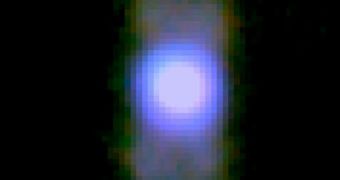Astronomers operating the only airborne space observatory in existence announce that they were recently able to collect a three-color composite image of the last days in the agony of a Sun-like star.
The object, called Minkowski 2-9 (M2-9), is a dying star, which is currently producing its last exhalations before finally succumbing to its fate. It was photographed in infrared wavelengths by the NASA Stratospheric Observatory for Infrared Astronomy (SOFIA).
According to experts, these space structures are incorrectly termed planetary nebulae. The name was given by early astronomers, whose telescopes were not sensitive enough to detect that the color, shapes and sizes of these structure – though reminiscent of gas giants – are in fact stars.
Observations at the time were primarily conducted with small telescopes, which had only a limited power of resolve, especially at great distances. This is why early scientists believed these structures to be gas giants, rather than much larger objects.
In more recent times, studies conducted with advanced instruments have revealed that these nebulae are in fact made up of gas and other materials expelled by Sun-like yellow dwarfs, as they reach the end of their main sequence, and get ready to turn into red supergiants, before finally becoming white dwarfs.
The main reason why SOFIA was used for this study is because astronomers wanted to study the hourglass-figure of the nebula, and gain a deeper understanding of why material flows out of dying stars in just one dimension.
At this point, most experts agree that a disk of material spinning around the star is what causes these opposing, high-speed flows of material. By using the instruments aboard the airborne telescope, the research team hoped to gain a deeper understanding of stellar evolution.
“The SOFIA images provide our most complete picture of the outflowing material on its way to being recycled into the next generation of stars and planets. We were gratified to see the lobes so clearly using SOFIA,” researcher Mike Werner explains.
“These early results demonstrate the scientific potential of this important new observatory,” adds the scientist. He was the principal investigator for the new study, and holds an appointment with the NASA Jet Propulsion Laboratory (JPL), in Pasadena, California.
SOFIA is a 2.5-meter aperture, 17-ton infrared telescope mounted in the tail section of a heavily-modified Boeing 747SP aircraft. This setup allows scientists to conduct airborne observations in the infrared portion of the electromagnetic spectrum from altitudes high above Earth's cloud cover.
Water vapors can impair IR observations significantly, which is why NASA and the German Aerospace Center (DLR) decided to build the 100-inch telescope on an airplane.

 14 DAY TRIAL //
14 DAY TRIAL //